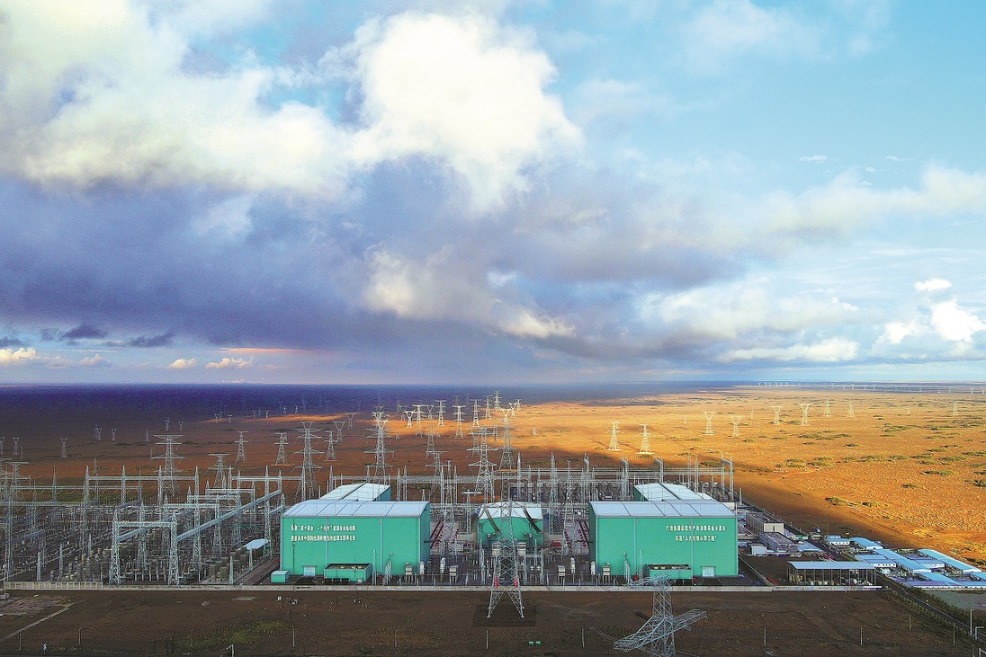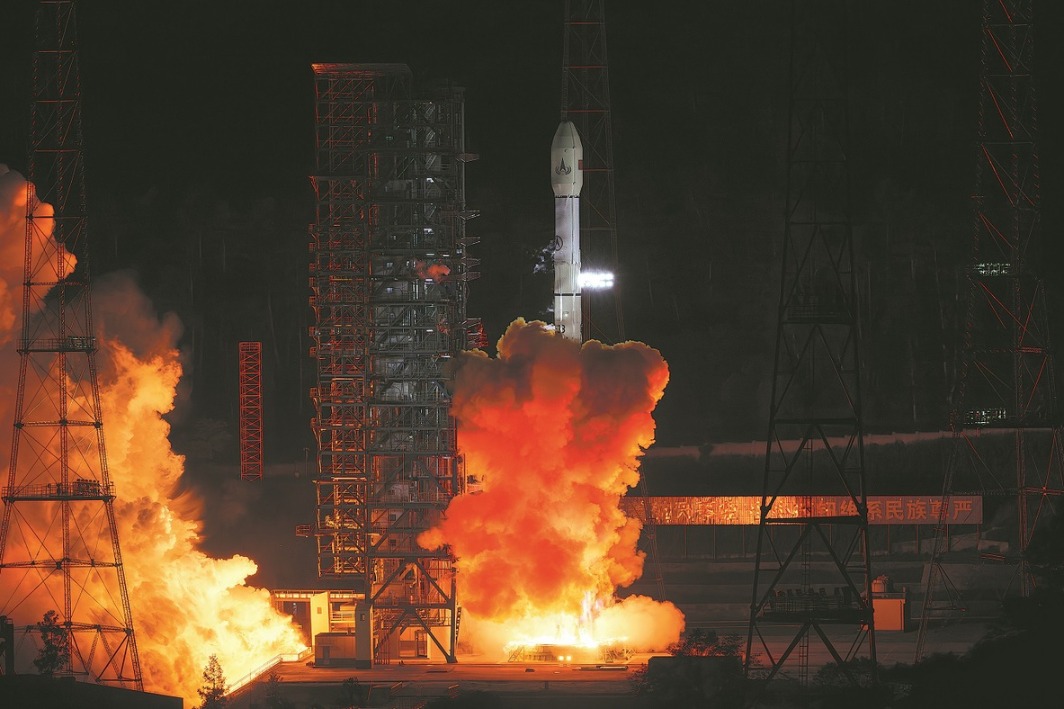Xinjiang powers ahead as nation's energy distributor
Advances in green technology, improved electricity transmission infrastructure help region achieve goals


Sun, wind and watts
In Ruoqiang county, Bayingolin Mongolian autonomous prefecture, the construction of a large-scale comprehensive power generation base, with total investment of 71.8 billion yuan ($10 billion), is advancing according to plan.
The base has a planned installed capacity of nearly 19 million kilowatts, comprised of 4 million kW of wind power, 8.5 million kW of photovoltaic solar, and 3.96 million kW of thermal backup, supported by about 5 million kW of energy storage. Construction began on Sept 28, 2024.
Wang Liang, the on-site project manager of the China Three Gorges Corporation's Xinjiang branch, is in charge of building the base.
"Once the power generation base goes into operation, over 60 percent of its electricity generation will come from renewable green energy sources, and the utilization rate of new energy will exceed 90 percent," Wang said.
The base will bring a range of benefits to local development. According to a support plan for industries, the corporation has signed agreements with several companies to set up factories for development of industrial clusters and to boost local employment.
Wang Rui, 37, works on the construction project. He was transferred from Beijing to Ruoqiang in March 2024 to carry out preliminary project work with his colleagues.
"When I was a child, my interest in engineering construction was more about natural curiosity. After graduating from Wuhan University with a degree in hydraulic engineering, I decided to integrate my personal career aspirations with national strategic goals. It inspired me to commit myself to the clean energy sector, specializing in hydropower engineering and new energy development," Wang Rui said.
He also worked overseas for many years.
"My main workplace was in Africa, in a place close to the Sahara Desert. The conditions were rather tough. There we taught local residents how to use photovoltaic panels.
"In Ruoqiang, local residents pass on their experience in sand control methods to us and we integrate them into engineering construction," Wang added.
Wang described China's role in the development of the clean energy industry over the past 10 years as "epic".
"From a follower to a leader, China's voice and influence have grown significantly in the clean energy industry," he said. "As of the end of 2024, China's installed capacity of wind and solar power has increased over tenfold compared to a decade ago, with clean energy now accounting for approximately 60 percent of the nation's total power generation capacity. Notably, about half of the newly added electricity demand is being met by clean energy sources, demonstrating a continuous rise in the green energy of China's energy mix," Wang added.























